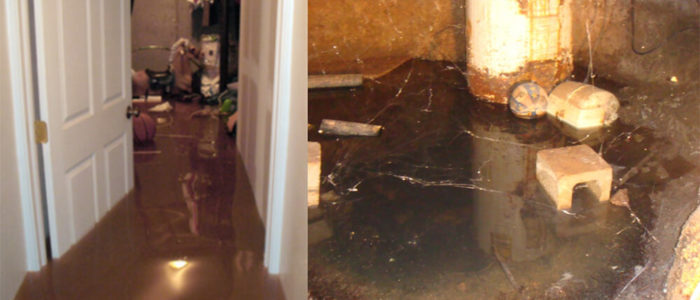Why a Sewage Pump is Needed Along With a Sump Pump due to Rise in Extreme Flooding
More untold devastation was caused by recent extreme rainfall events in the UK. Basements and ground floors of vulnerable properties were not only engulfed by record-breaking levels of flood water. Many of the same domestic spaces were also filled by raw sewage. Not only would a sump pump be needed for water removal but also a sewage pump to deal with the solid effluent.
A staggering 3,252 properties across the UK were internally flooded by sewage 2018 /19, according to latest available figures from Water UK. A significant number were based in and around London, and other major urban areas. Today, a modern separate sewer would be built to take away raw sewage and rainwater. However, in much of the capital, the sewer system is combined, leading to foul waste from toilets and kitchens mixing with rainfall.
Article Chapters
Sewage pump essential for basement below the main sewer pipeline
Sewers have been designed to cope with previous heavy rainfall events. However, in recent years, both rainfall frequency and severity has increased. As groundwater levels rise the sewer flow soon reaches maximum capacity and overwhelms the system. More than 1,030 homes were flooded with sewage in the Thames water area compared to around 340 properties in the Anglia Water region (Water UK).
Flooding combined with raw sewage can mean a sewage pump will be even more essential in properties where a basement bathroom, kitchen or utility room is plumbed in below the main sewer pipeline.
Typically, sewage will include soft solids up to 2 inches in diameter that can be pumped from a sewage basin to a sewer system or a septic tank. Normally, a sewage pump is installed at the lowest point of the sewage basin. However, when waste water and sewage cannot be discharged upwards against the natural downward flow of gravity- known as ‘gravity drainage’ – the result will be sewage backing up to block pipes and to cause further hygiene and odour problems.
High quality sewage pump should have a working life of at least 7-10 years
Sewage pumps are centrifugal in operation which enables solids to pass without clogging the unit. A motor generates the required pressure to force the effluent through the impeller and into the discharge pipe. The pump housing containing the motor and impeller is made with cast iron and is built for long term use. This should mean that a high quality sewage pump should have a working life of at least 7-10 years.
One of the common reasons why a sewage pump needs to be replaced is an initial, faulty installation or an incorrectly-sized pump. The average size sewage pump required for waste solids in a residential system is a minimum of 38cm (1.5 in) or a minimum 64cm (2.5in) for a commercial or industrial system.
As with sump pumps and other types of specialised liquid pumping equipment, ensuring a proper installation of the correct size unit and routine service maintenance could mean many more years of reliable operation.
Raw sewage caused by Gravity Drainage or severe flooding?
Propel your problem away with a sewage pump
TEL 01634 215192

